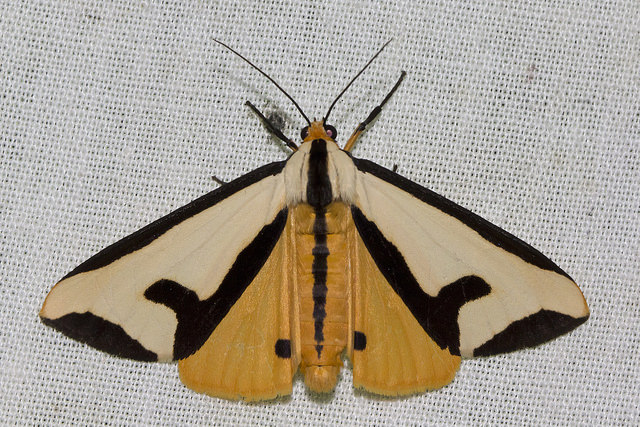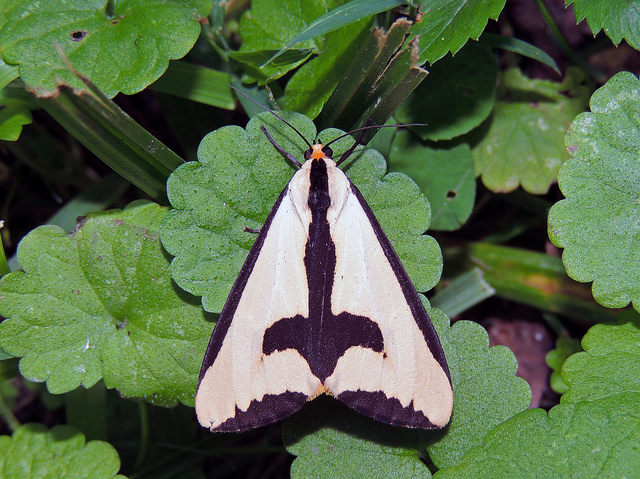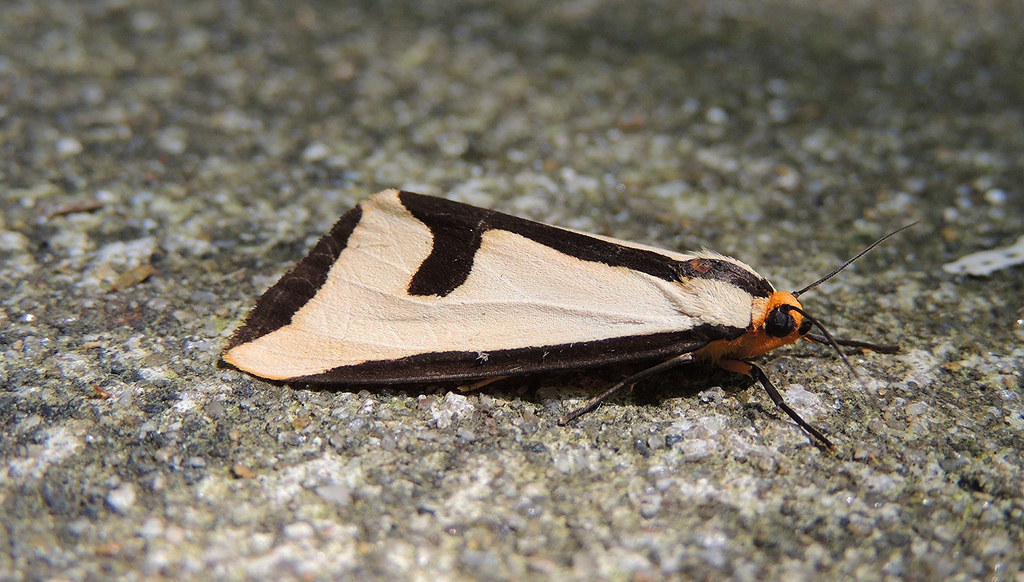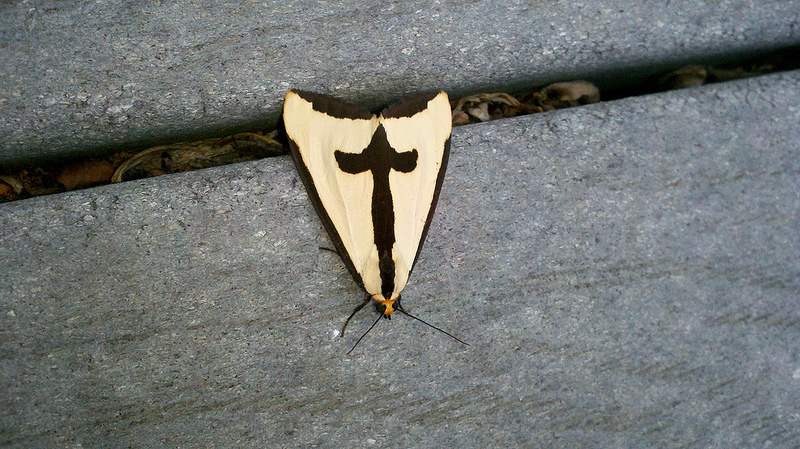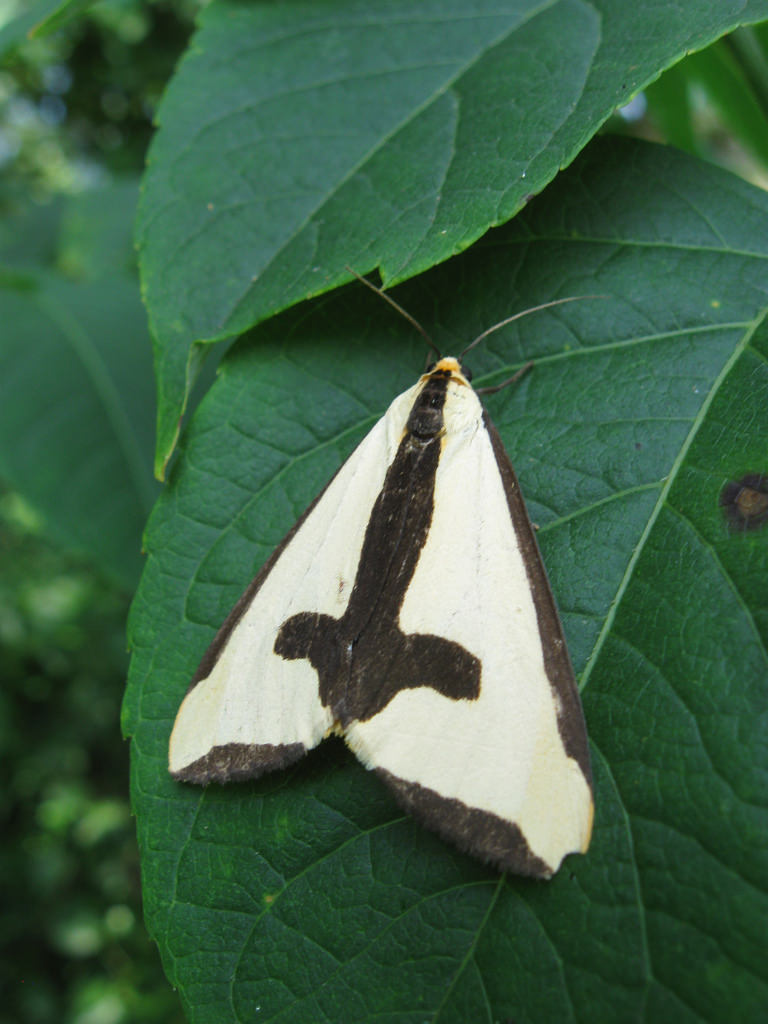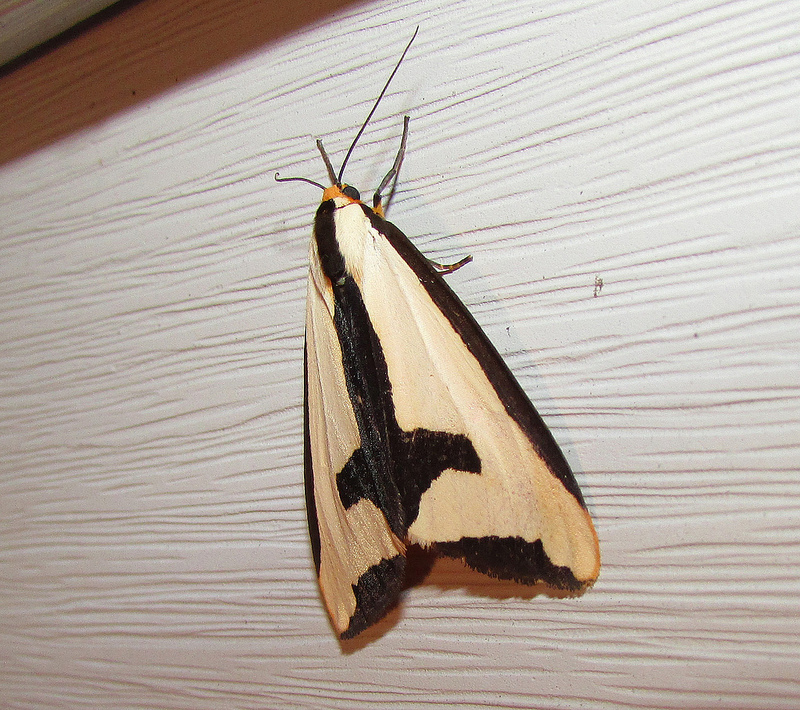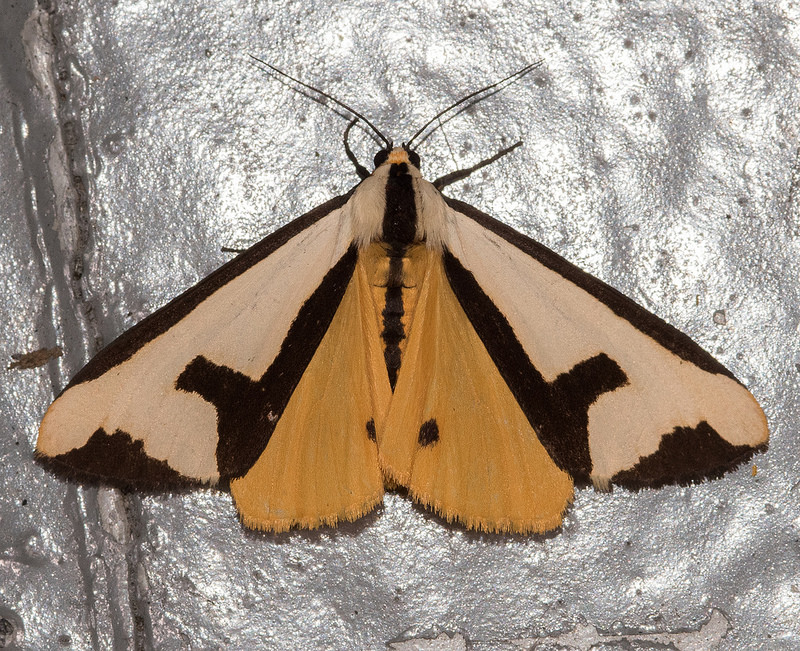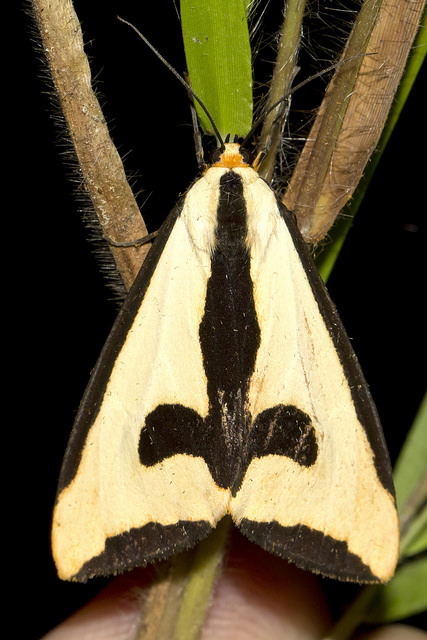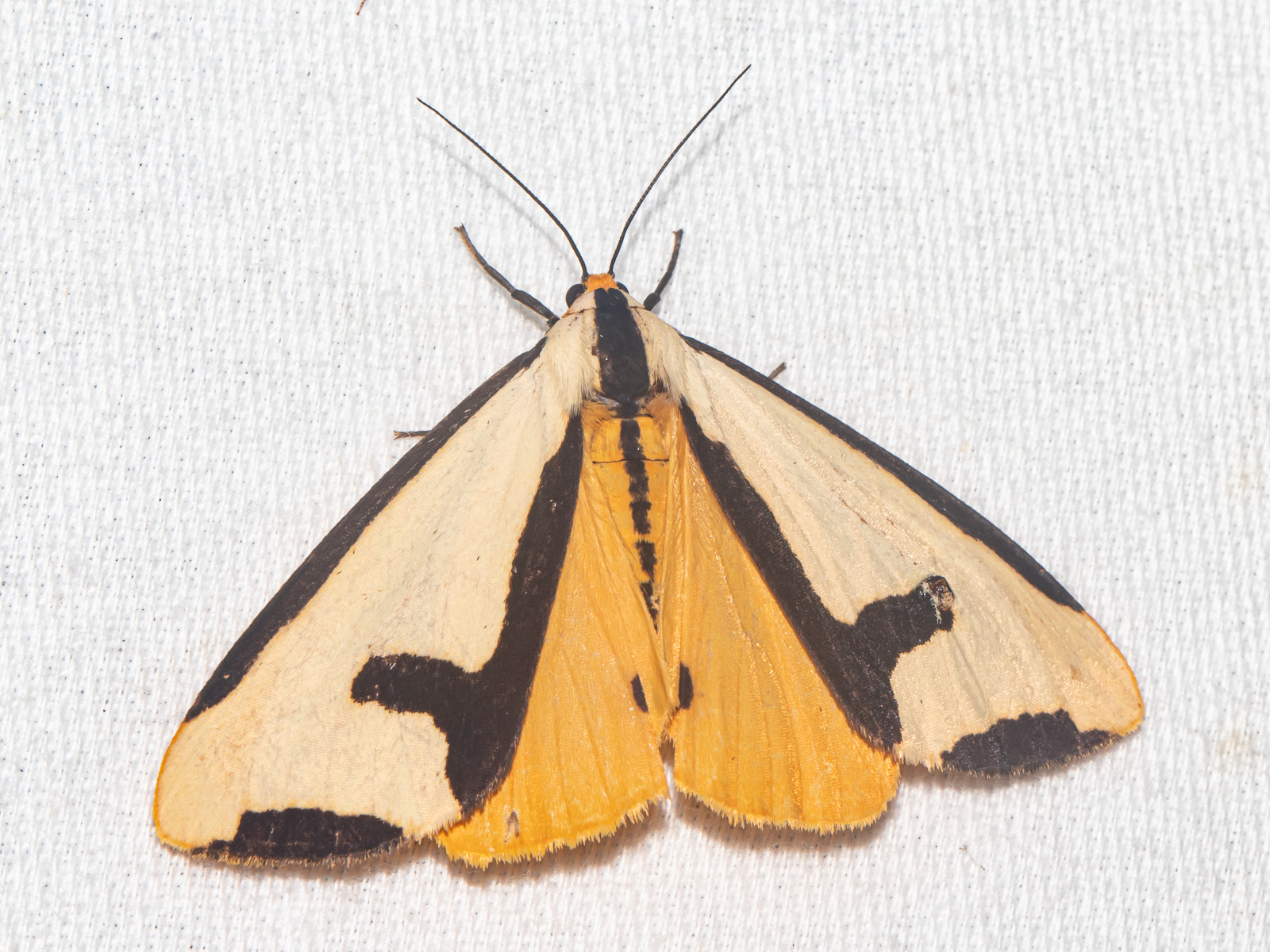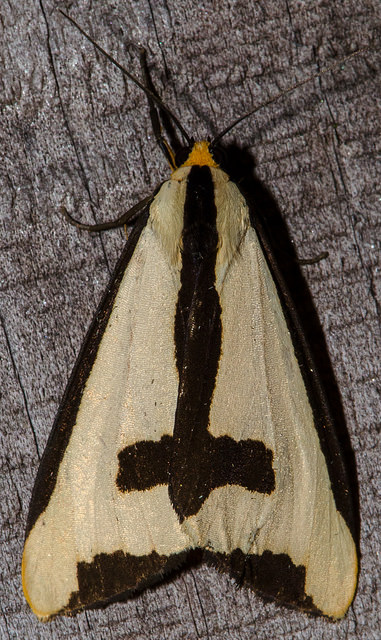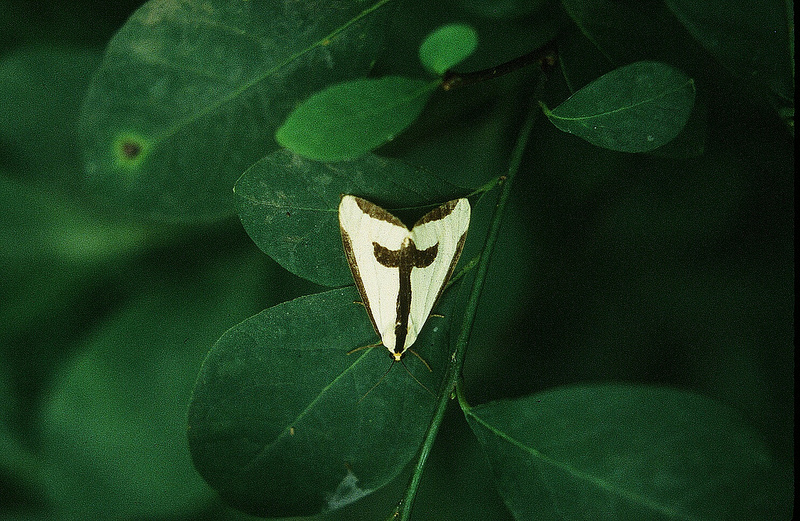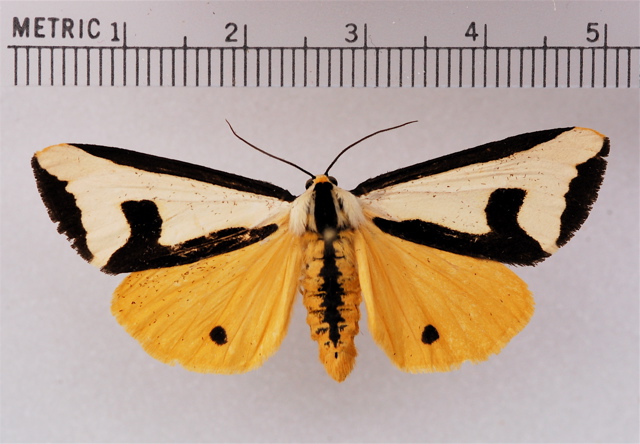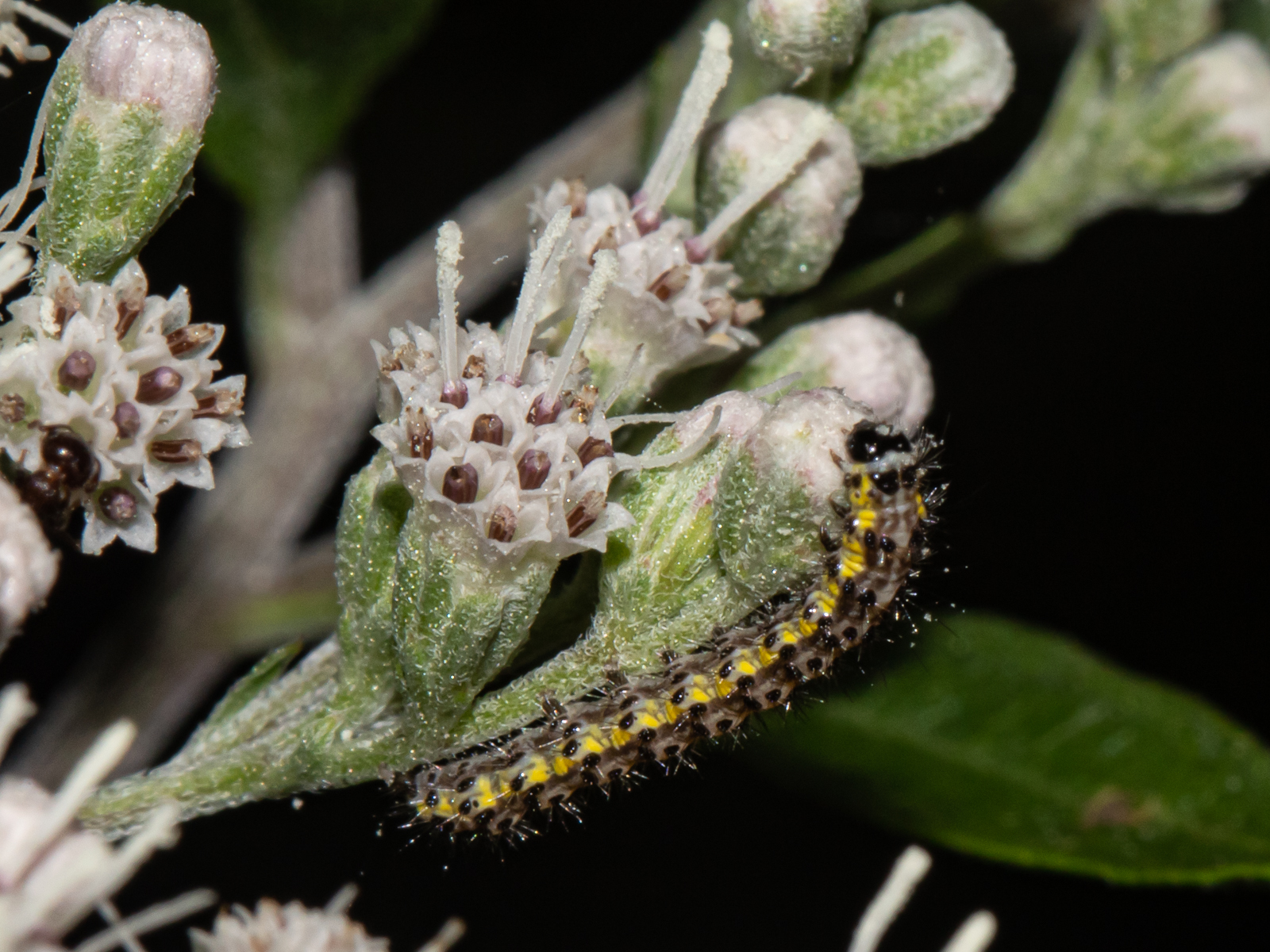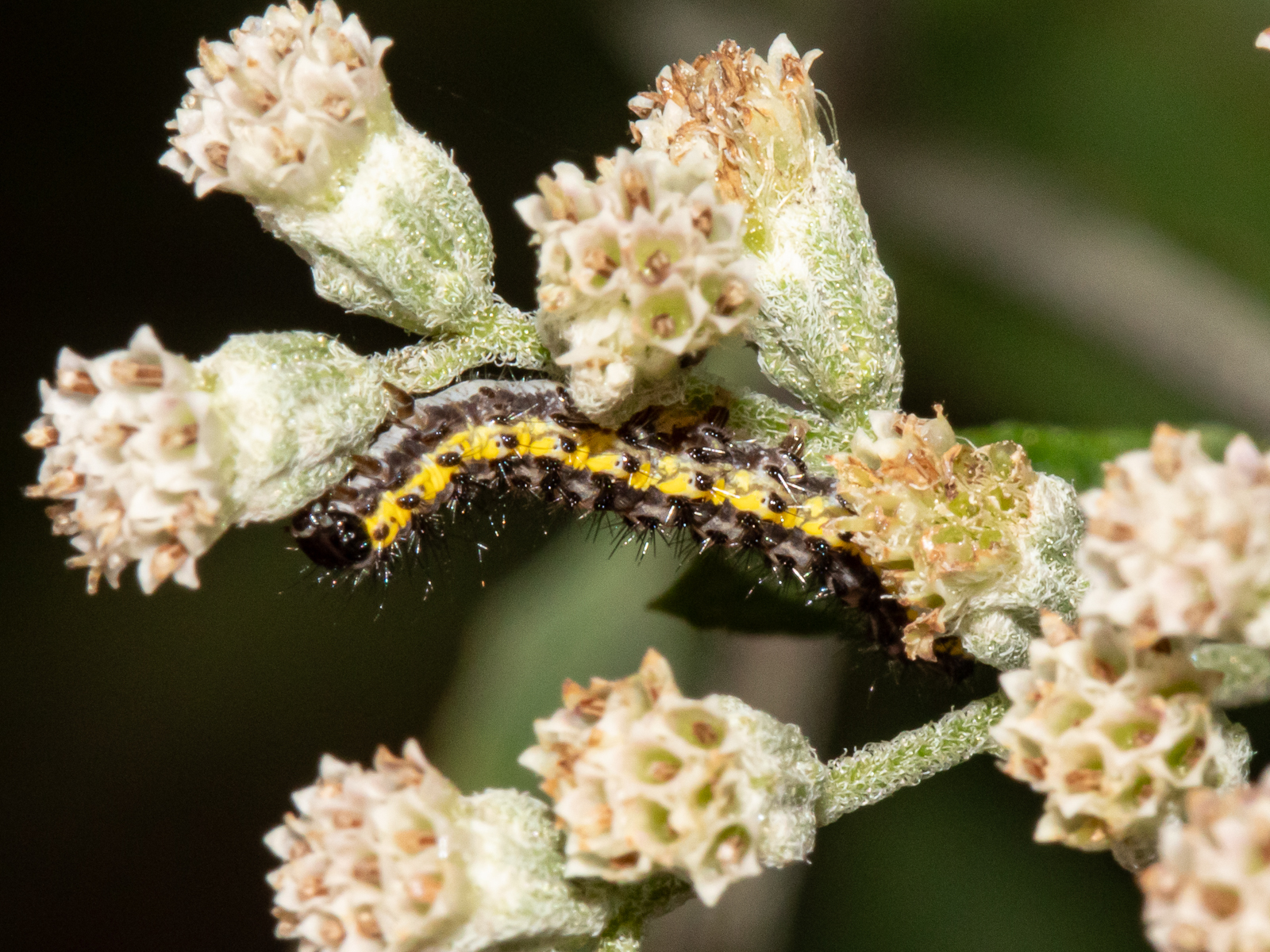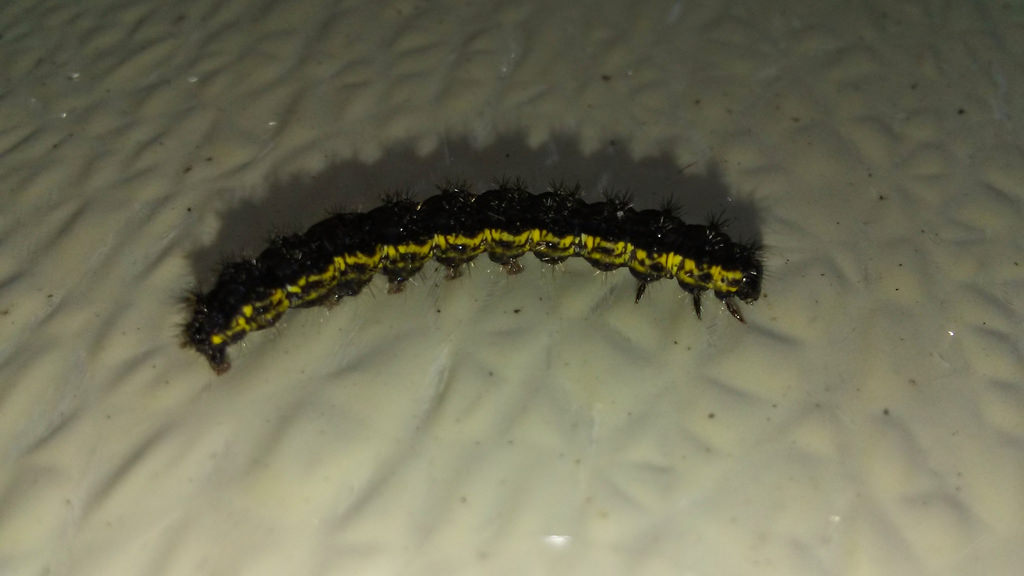Map Snapshot

























403 Records
Status
The Clymene Moth is diurnal and readily comes to lights. Common on the western shore. Uncommon on the Eastern Shore.
Description
White forewings with dark edges and a dark cross pattern, coupled with orange hindwings are diagnostic field marks. According to the Moths of North Carolina, Clymene Moths do not have an all white wing form like other Haploa species. Orange hindwings narrow your choices to Colona Moth and Clymene Moth.
Relationships
According to BugGuide, larvae are generalists and feed on a variety of plants including oaks and asters.
Seasonality Snapshot
Source: Wikipedia
| Clymene moth | |
|---|---|
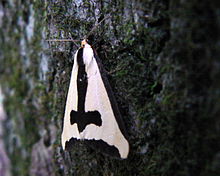
| |
| Scientific classification | |
| Domain: | Eukaryota |
| Kingdom: | Animalia |
| Phylum: | Arthropoda |
| Class: | Insecta |
| Order: | Lepidoptera |
| Superfamily: | Noctuoidea |
| Family: | Erebidae |
| Subfamily: | Arctiinae |
| Genus: | Haploa |
| Species: | H. clymene
|
| Binomial name | |
| Haploa clymene (P. Brown, 1776)
| |
| Synonyms | |
| |
Haploa clymene, the Clymene moth, is a moth of the tiger moth subfamily - Arctiinae, tribe Arctiini. The species was first described to Western science by Peter Brown in 1776. It is found in eastern North America.
Description
[edit]The forewing is creamy yellow with a partial brown-black border that extends inward from the inner margin near anal angle. The hindwing is yellow orange with one or two brown-black spots. The wingspan is 40–55 mm.
Life cycle
[edit]The spiny larva is brownish black with a yellow middorsal stripe. The larvae overwinter and mature in the spring and early summer. The larvae feed on Eupatorium, oak, peach and willow. The Clymene moth has one brood per year.
References
[edit]- Wagner, David L. (2005). Caterpillars of Eastern North America. Princeton University Press, Princeton, New Jersey. ISBN 0-691-12143-5
- Covell, Charles V. Jr. (2005). Moths of Eastern North America. Virginia Museum of Natural History, Martinsville, Virginia. ISBN 1-884549-21-7
External links
[edit]- Lotts, Kelly & Naberhaus, Thomas (2017). "Clymene Moth Haploa clymene (Brown, 1776)". Butterflies and Moths of North America. Retrieved August 23, 2019.
